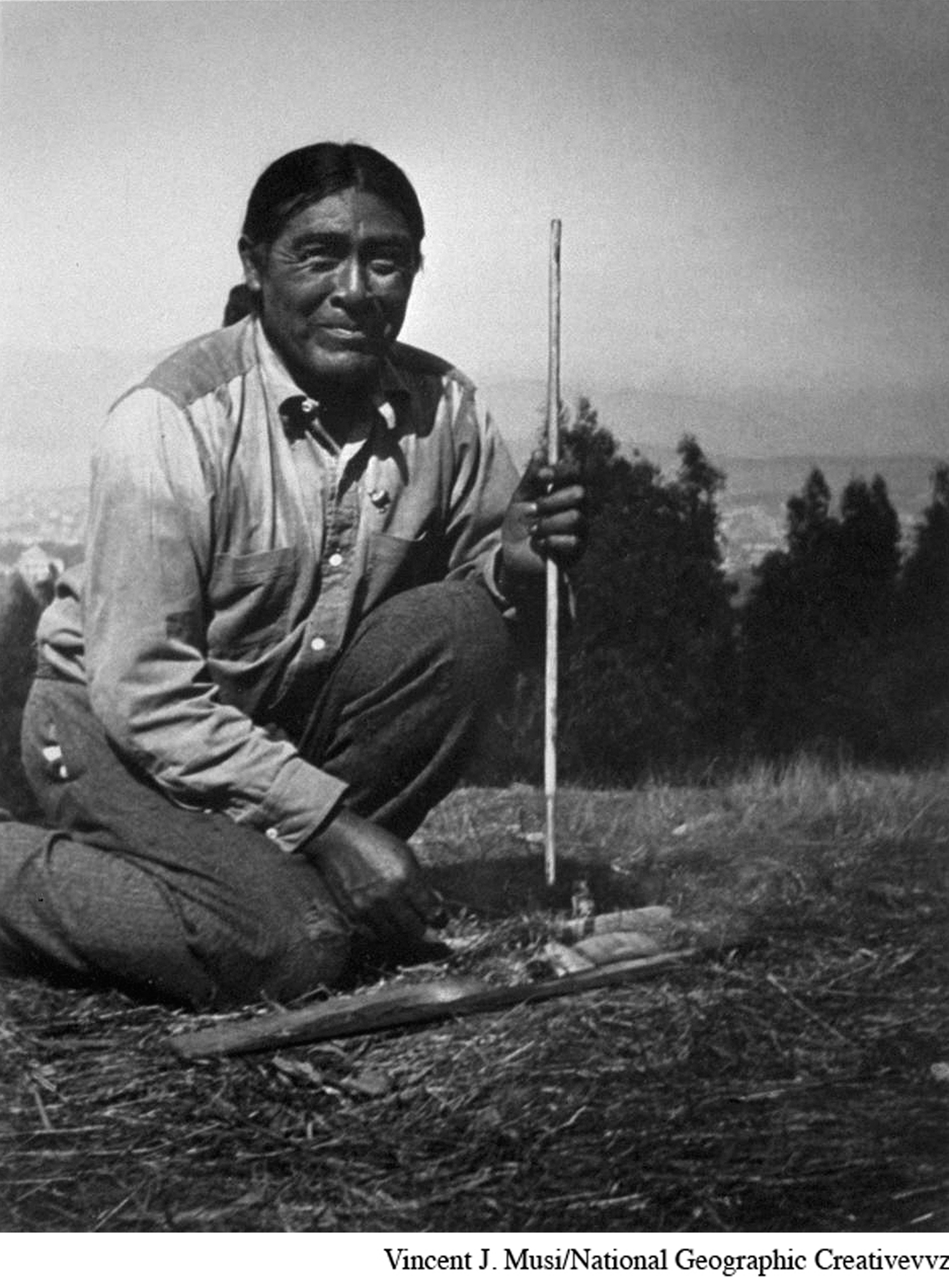ZOOMING IN: Ishi, the Last of His People

In late August of 1911, an emaciated and nearly naked man, about fifty years old, staggered into the corral of a slaughterhouse in northern California. As it turned out, he was the last member of his people, a gathering and hunting group known as the Yahi, pushed into extinction by the intrusion of more powerful farming, herding, and “civilized” societies. It was a very old story, played out for over 10,000 years since the Agricultural Revolution placed Paleolithic cultures on the defensive, inexorably eroding their presence on the earth. The tragic story of this individual allows us to put a human face on that enormous and largely unrecorded process.
Within a few days, this bedraggled and no doubt bewildered man was taken into the care of several anthropologists from the University of California, who brought him to a museum in San Francisco, where he lived until his death from tuberculosis in 1916. They called him Ishi, which means “person” in his native language, because he was unwilling to provide them with his own given name. In his culture, it was highly inappropriate to reveal one’s name, especially to strangers.
In the mid-
By 1870, Ishi’s community had dwindled to fifteen or sixteen people, who lived in an even more inaccessible region of their homeland. In these desperate circumstances, traditional gender roles blurred, even as they undertook great efforts to conceal their presence. To avoid making footprints when traveling, they jumped from rock to rock; they ground acorns on smooth stones rather than on more obvious hollowed-
Then in 1908, a group of American surveyors came across a naked Ishi harpooning fish in the river, and a few days later they found the tiny settlement that sheltered the remaining Yahi. Only Ishi’s aged mother was present, hidden under a pile of skins and rags. They did not harm her, but they took away every movable item—
In his new home in the museum, Ishi became something of a media sensation, willingly demonstrating his skills for visitors—
Questions: What accounts for the ability of Ishi’s people to survive into the twentieth century? What emotional or moral posture toward Ishi’s life seems most appropriate? What perspective does it lend to the larger story of the gradual erosion of gathering and hunting societies the world over?